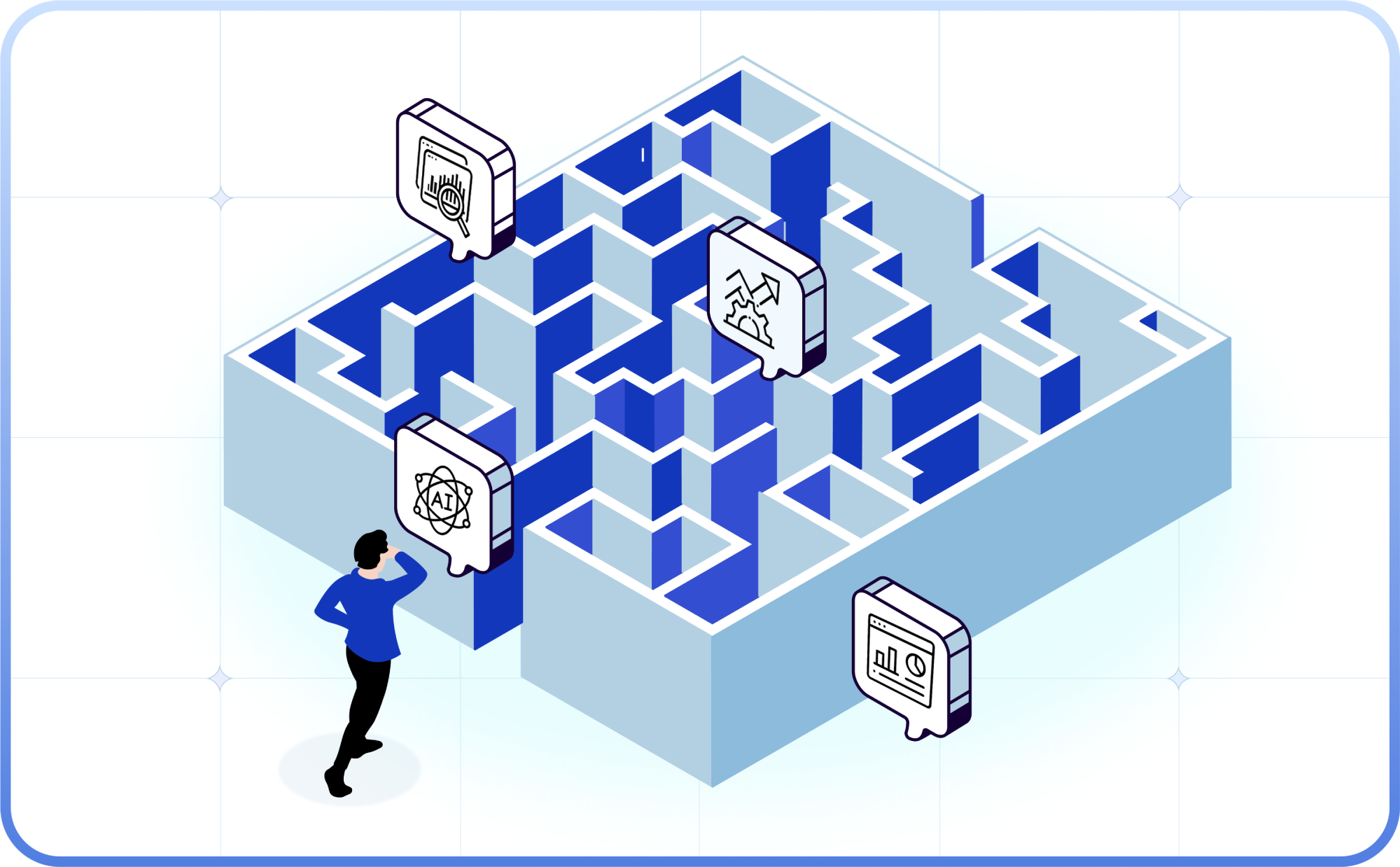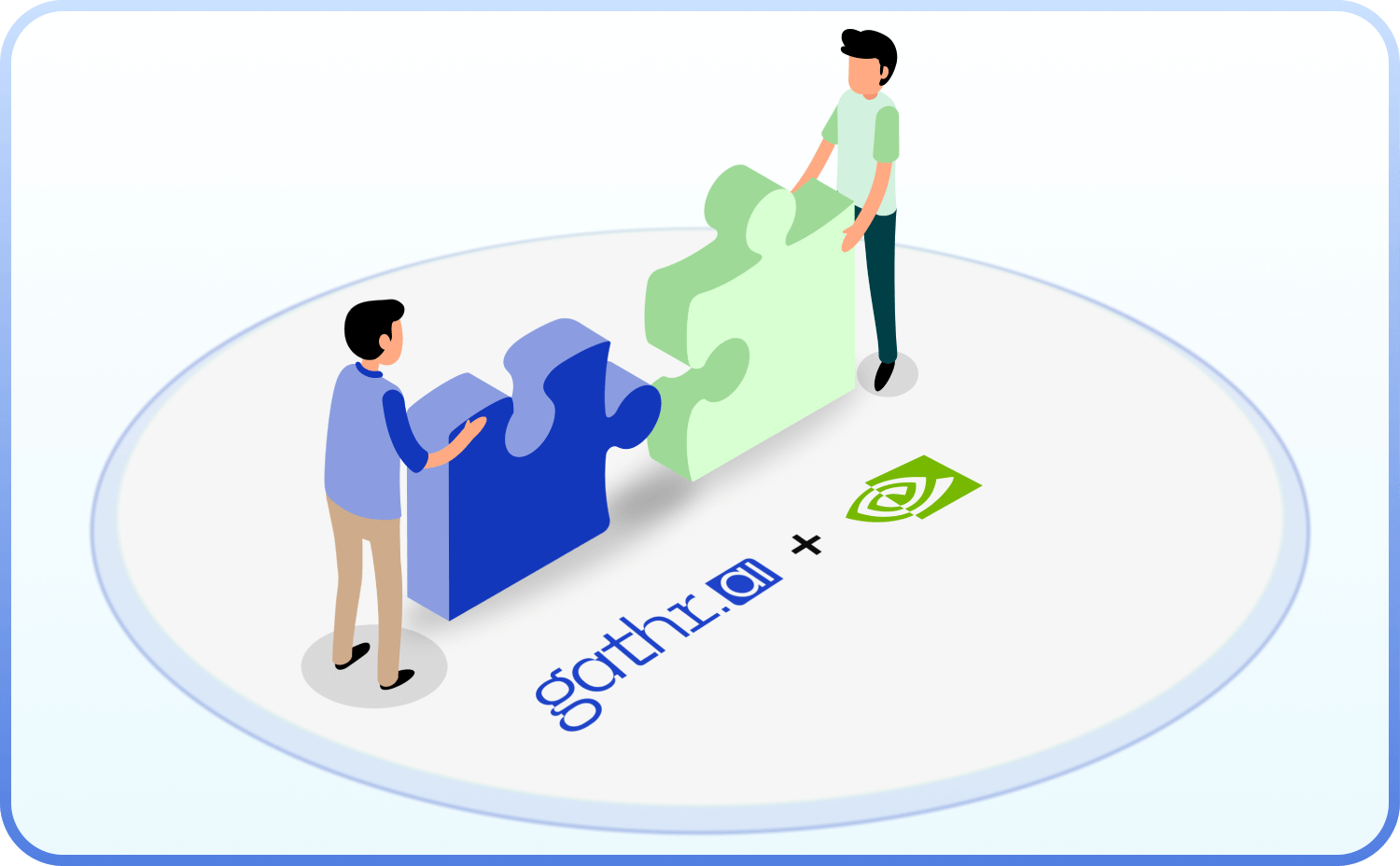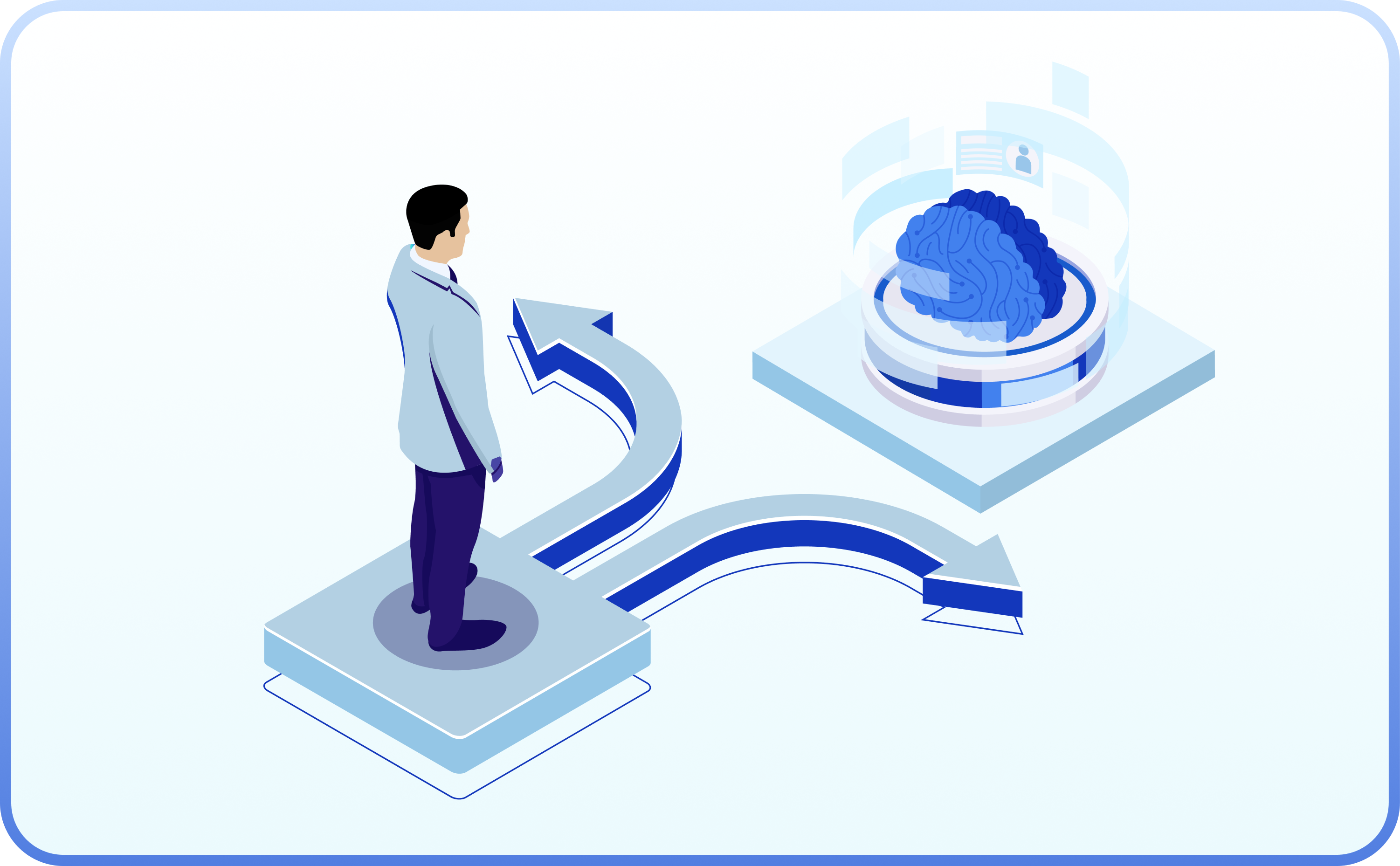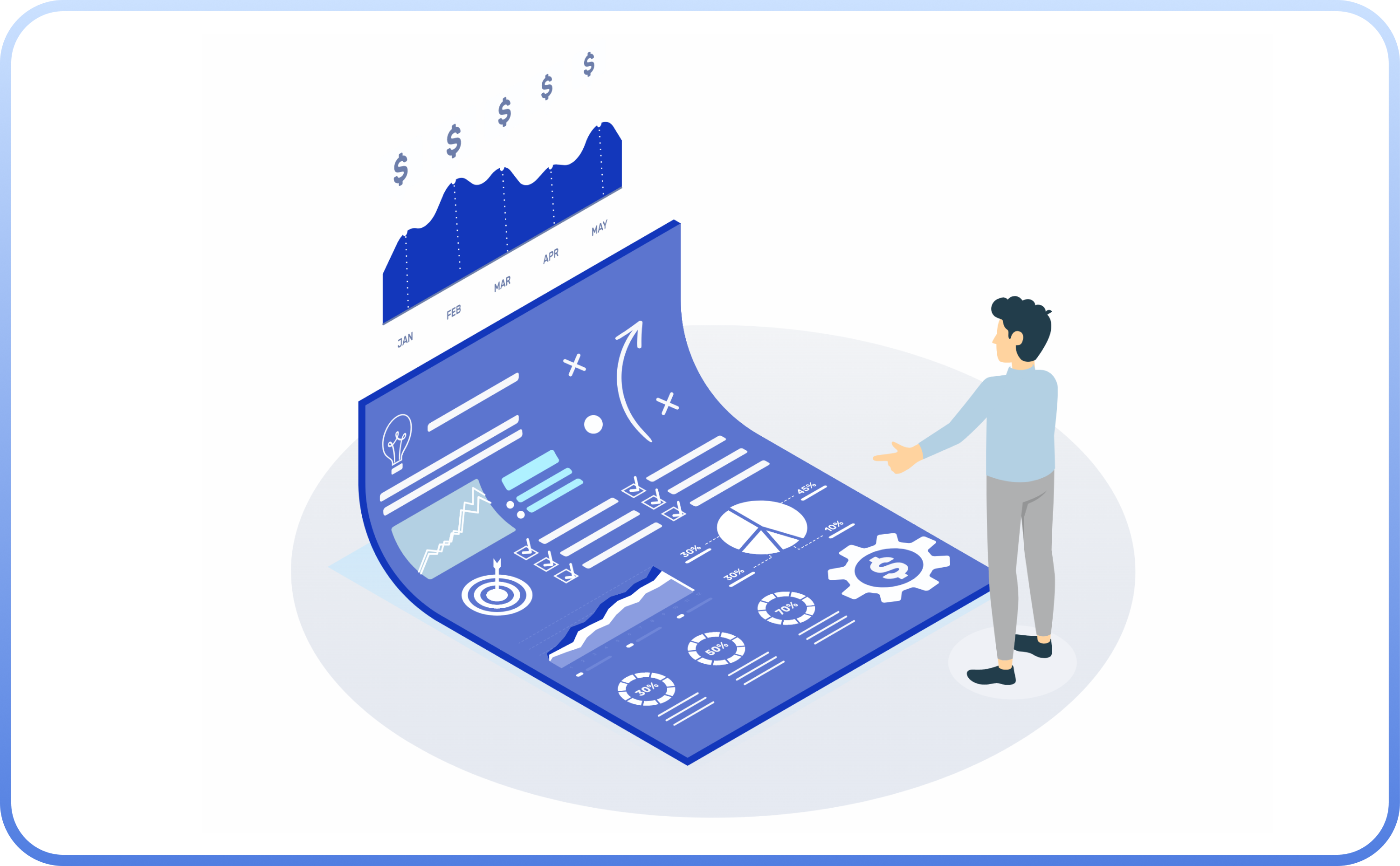Summary
Despite the explosion of data, AI tools, and dashboards, most businesses struggle to get high-quality, actionable intelligence. Key roadblocks include poor data context, limited exploration capabilities, and slow time to market. This blog post outlines a new, innovative approach to addressing these challenges and unlocking contextual, high quality insights directly from your existing data estate.
We live in the era of abundance — businesses are submerged in data, AI capabilities are evolving faster than ever, and experimentation is at an all-time high. But despite the explosion of agents, tools, and dashboards, one thing remains in short supply — high quality intelligence. When deep, business-critical questions arise, teams fall back on manual cycles — ad-hoc SQL, spreadsheet workarounds, and hand-stitching context.
*A recent report by Forrester on business intelligence revealed a telling gap: Of all enterprise non-IT professionals who should be using analytical platforms hands-on, only 20% do so. These include business analysts, data analysts, data scientists, and developers. The other 80% still rely on the 20% for data sourcing, data discovery, data integration, metric building, analysis, and insights. The result? Overburdened analysts and delayed decisions.
But this lack of democratization is just one of the bottlenecks in the pursuit to trustworthy, actionable intelligence. Poor quality data, tool limitations, and context blind spots also weaken the reliability of insights. This article breaks down the key roadblocks to intelligence and introduces a new, innovative way forward.
Daunting bottlenecks, delayed decisions
When it comes to deriving actionable insights from large volumes of data, even businesses with robust investments in data warehouses, analytics platforms, and AI face major challenges. Let’s take a closer look:
Incomplete data context: Without a complete understanding of an organization’s data, metadata, and business rules, intelligence falls flat — as AI cannot reason, explain, or earn trust. Data context awareness is critical to understanding the ‘why’ behind the numbers —why sales dropped in a region, why customer churn spiked, or why a campaign underperformed. Without the context layer, insights lack depth and relevance.
Limited data exploration capabilities: Most analytics tools are built for reporting rather than self-service data exploration. While dashboards can deliver metrics to show what happened, they offer little or no support for digging deeper. Analysts struggle to perform causal reasoning at scale and end up spending most of their time on data discovery. Executives don’t have the levers needed to test and evaluate competing hypotheses.
Slow time to market: Building and shipping production-grade analytics products can take months, with multiple peripheral elements like access controls, auditing, reporting, and cost attribution, being built from scratch. What’s more, sprawling pipelines and manual context stitching for AI causes delays when moving from prototype to production.
Why standard copilots and DIY efforts fall short
To resolve these challenges, many users try and fall back on the source where their data resides – their data warehouse. But while modern data warehouses work well for storing and querying large volumes of data, their built-in assistants/copilots miss the mark when it comes to delivering intelligence. They factor in limited metadata, and little or no business semantics. Despite basic support for natural language querying (NLQ), simple Q&A can take hours, with new use cases taking much longer. What’s more, data warehouse copilots lack the deep reasoning capabilities needed for root cause analysis, trend explanation, hypotheses evaluation etc.
As an alternative approach, many organizations take the Do-it-Yourself (DIY) route, building homegrown intelligence solutions. But this demands considerable time and effort, as context modeling is a manual process, and updates require ongoing effort. Assembly, tuning, and quality assurance can take months. What’s more, each data source must be wired and maintained manually – which becomes increasingly challenging as the data estate grows.
Bridging the gap with data warehouse intelligence
The roadblocks outlined above point to the pressing need for a better approach to deriving intelligence from organizational data. An approach that leverages existing data estate investments and empowers both business and technical users to quickly access and deliver smarter insights.
This is where data warehouse intelligence, by Gathr.ai, adds immense value. Powered by data context aware AI, it seamlessly adds the missing layer on top of a user’s existing data estate, delivering insights that are explainable, conversational, and decision-ready. It enables rapid prototyping, high quality analysis, and quick iterations.
Key pillars:
Data context-aware AI: Curated data ensures trust, consistency, and explainability; while metadata and business rules provide AI the guiding context. As a result, when users ask their data questions, they get answers that are data-backed and context-rich.
High-fidelity data discourse: Enables users to ask their data complex ‘why’, ‘what if’, and ‘how do I’ questions in natural language, such as ‘Why did revenue dip in Q2 for Region B?’ ‘What’s driving it — discount strategy, lead quality, or something else?’ ‘How do I improve win rates in enterprise deals?’ Users can instantly dig deeper, perform causal reasoning, test competing hypotheses, validate responses, and get actionable recommendations that move business KPIs forward.
Day-zero intelligence: Users can simply connect their data source and start conversing instantly – data warehouse intelligence is production-ready from the get-go. It delivers reliable answers from the very first question and helps ship high-quality analytics in days, instead of months.
Data-local by design: Runs natively on top of the existing data estate and meets users where they are. Whether your data resides on-premises, in the cloud, in a single source or across multiple sources (data warehouses, databases or federated SQL engines), data warehouse intelligence snaps into your stack seamlessly – no migration, rewrites, or re-platforming needed.
No matter the industry or use case, Gathr.ai’s data warehouse intelligence helps unlock higher quality intelligence that improves business outcomes and drives growth. Here are a few real-world examples of how customers are using it to realize their business goals:
- A retail customer built an application to analyze marketing campaign effectiveness and enhance performance
- A leading bank built an application on transaction data to uncover fraud patterns and reduce risk
- An automotive giant uses data warehouse intelligence to analyze sales data and increase revenue
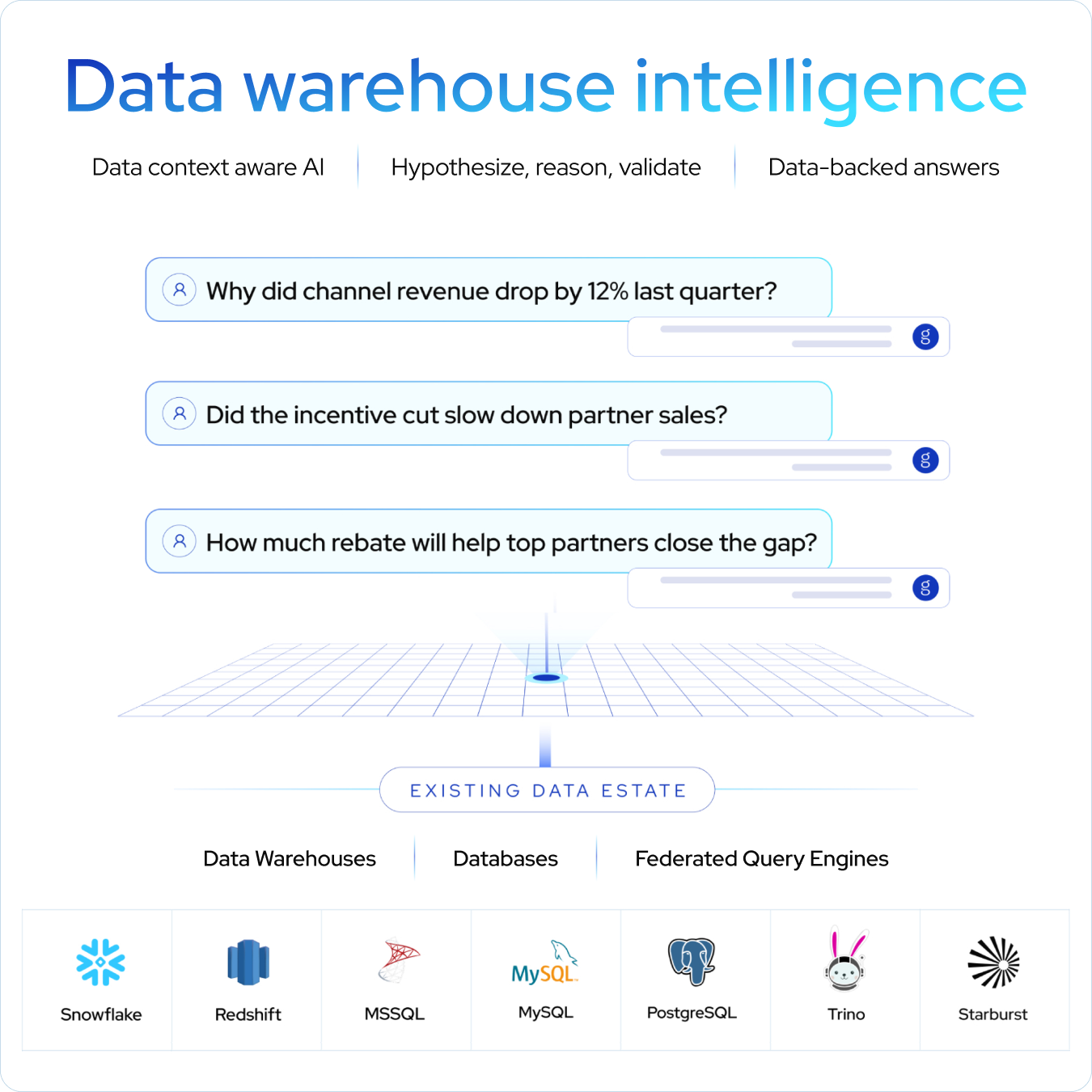
Breakthrough value for every user
Data warehouse intelligence has been thoughtfully designed to democratize access to best-in-class intelligence and deliver a plethora of benefits to teams across the organization.
Business executives: Brainstorm with AI that feels like a trusted, data-savvy expert. Experience true self-service data exploration and explore freely without slicer and dimension constraints. Get data-driven answers to high-stakes questions instantly— no delays or analyst wait time. Actively shape KPIs, drive the analysis behind them, and propel growth.
Analytics leaders: Bridge the analytics quality gap and empower business executives to dig deep into their data using plain language. Reduce ad-hoc requests and maximize team efficiency, while enhancing analytics adoption across the organization and improving ROI from your data stack.
Analysts: Meet your AI-powered ‘digital twin’ to co-pilot analysis. Skip catalog and query grunt work and focus on delivering richer insights that win stakeholder buy-in. Get tunable first drafts, iterate faster with a REPL-style interface, and improve answer quality with a few minor tweaks.
Developers: Instantly feed AI with complete data context and focus on use case development rather than plumbing. Test, compare, swap AI models, and use the model that fits your needs best. Build higher-quality analytics products faster and deploy with confidence on your own stack.
Final thoughts
Organizations don’t need more AI models or analytics tools. They need better business outcomes. And these outcomes depend on intelligence that’s contextual, explainable, and ready to act on — not buried in spreadsheets or dashboards. This is exactly what data warehouse intelligence delivers leading organizations every day.
Ready to move from surface-level insights to boardroom-ready intelligence? Book a demo today!
Source: Bring Data To The Other 80% Of Business Intelligence Users


 Redshift
Redshift MS SQL
MS SQL  MySQL
MySQL PostgreSQL
PostgreSQL Trino
Trino Starburst
Starburst
 All resources
All resources